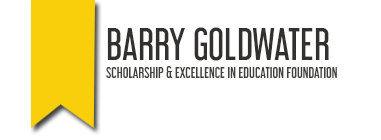Taylor Barnes, 2009 Goldwater Scholar
At 14 months, Taylor Barnes’ father inadvertently introduced him to computers. His mother was horrified to see her child sitting in an office chair, propped up on books, and reaching out to a keyboard and mouse, but it was at that moment that Taylor found his calling.
“I’ve been interested in computers from a very young age and I started programming around age eight. I’ve always enjoyed the intellectual rigor of the work.”
Taylor enrolled at Middle Tennessee State University (MTSU) at the age of 15 and began to receive many accolades for his work. He was the recipient of MTSU’s Provost Award, the highest honor given to an undergraduate, recognized in one of the USA Today Academic Teams, and received many other awards in chemistry and physics. He then spent a summer as an intern at the Oak Ridge National Laboratory working on the Multiresolution Adaptive Numerical Environment for Scientific Simulation, or MADNESS, project, which was later recognized by an R&D 100 Award, while working on an Honors thesis in computational chemistry.
At 16, Taylor applied for, and won, the university’s first Goldwater Scholarship.
“The Goldwater Scholarship was my first experience preparing an application for a highly competitive award. That experience helped pave the way for future successes, and was one of the primary reasons I was later accepted into a top-tier graduate program at Caltech.”
During his time at Caltech, he worked on developing improved methods for the computational simulation of chemical systems and was recognized by a High Performance Computing Achievement Award from NERSC, the primary scientific computing facility for the Office of Science in the U.S. Department of Energy. He also worked on Quantum Espresso, an Open-Source software package for stimulating molecular systems using plane-wave density functional theory, and some of his graduate work was featured on the cover of the Journal of Physical Chemistry C. His graduate work continued to receive recognition and awards for leading the development and implementation of powerful new computational methodologies to model complex systems, which will help to advance the understanding of fundamental chemical processes in catalysis, solar energy conversion, and battery technologies.
Taylor completed his Ph.D. in chemistry at Caltech in April 2015 after which he began working for NERSC at the Lawrence Berkeley National Laboratory in Berkeley, CA
Today, Taylor works at NERSC as the Admiral Grace Murray Hopper Postdoctoral Fellow, where his primary responsibility is developing improved scientific software for use on NERSC’s newest supercomputer, which is the 5th most powerful computer in the world.

